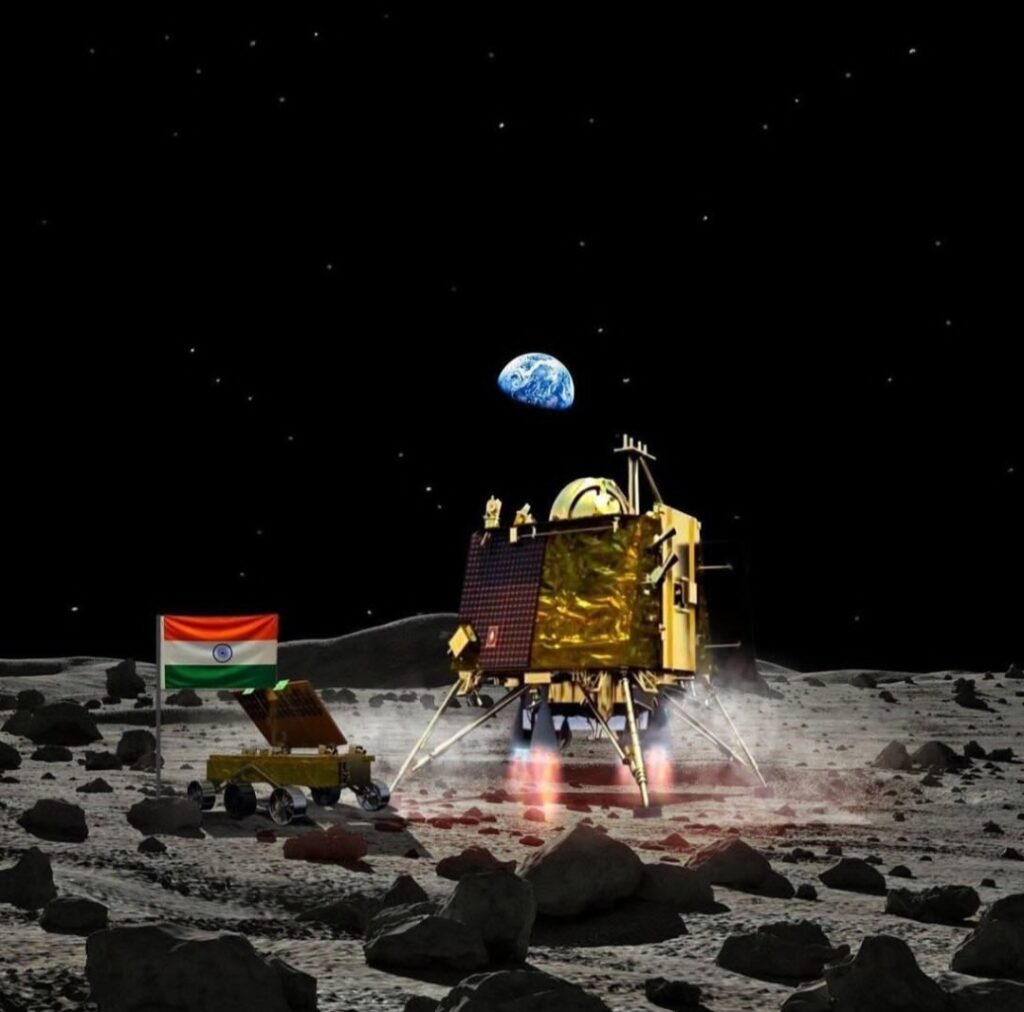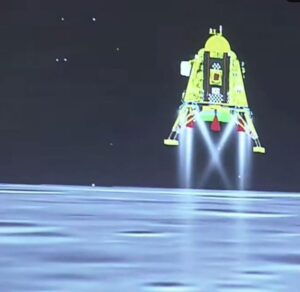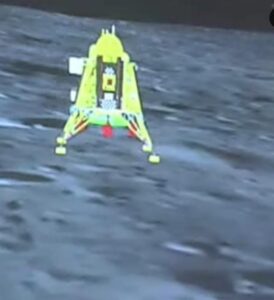India’s Stellar Success in Lunar Exploration
“Learning from failure of Chandrayan 2 paved way for today’s success”ISRO chief August 23 2023 will be the golden day in Indian history it is not they not for ISRO but all of Indian Science Chandrayan 3 Lander module has successfully test down on the moons South Pole South Pole making India the first nation in the world to achieve achieve this success India became the 4th Nation after the US China Russia to have landed on the Moon.

the very first attempt Chandrayan-1 in 2008 it was India’s first deep mission it was successful mission result the discovery of water molecule in the lunar surface as Chandranyaan-2 launch date July 22,2019 and the landing is on September 6,2019 but the orbital in moons Orbit London crashed a minute before touchdown.Taking experience from Chandranyaan-2 all the scientist deeply involved in the mission Chandrayan-3.
So,there is a big achievement for all the ISRO scientist. The smiling faces of mission make it possible ISRO chief S.Somnath celebrate this success with all there teammates.Now the team have take long deep breath. All the scientist make a big effort of 8-4 year said M Sankaran director of the Bengaluru based U.R.Rao satellite Centre. It was a big achievement by India’s space scientist .
ISRO Chandrayaan 3 made a perfect touchdown in Moon’s South Polar region at 6:04 p.m. on Wednesday.
The landing happened of Chandrayan-3


- 5:43 p.m. power decent being begin with rough breaking phase Vikram landers velocity at 1680 m/s.
- The next 11:05 min-lander velocity reduce to 358 m/s,altitude down from 25 to 7.4 km.
In next 10 second it designed to 6.4 km. - Next 3 minute altitude reduce to 800 M. Vertical descent begins Vikram Rover at 149.8 for around 22 sec.
- In next 38 sec, it Descent to 10 m above lunar surface
- Vikram take 9 second for final Descent of 10m
6:04p.m.-it touchdown the moon surface after the successful landing. Vikram Lander deploys in solar panel. - Rover moment on Moon surface to begin Lander and Rover start sending data
India’s Stellar Success in Lunar Exploration
In the annals of space exploration, India has etched its name with golden letters through the Chandrayaan missions. Chandrayaan 1, launched in 2008, and its successor Chandrayaan 2, launched in 2019, mark significant milestones in India’s space odyssey. These missions not only demonstrated India’s technological prowess but also expanded our understanding of Earth’s enigmatic celestial neighbor.
Chandrayaan 1: Pioneering India’s Lunar Ascent
Genesis of Chandrayaan 1
In a historic leap, India’s national space agency, the Indian Space Research Organisation (ISRO), embarked on its lunar journey with Chandrayaan 1. The mission’s primary objectives were to survey the moon, study its mineralogy, and map its surface.
Technological Marvels
Chandrayaan 1 was equipped with a suite of cutting-edge scientific instruments, including a Moon Impact Probe (MIP) and a Moon Impact Probe (MIP), to study the moon’s surface and analyze its chemical composition.
The Moon Impact Probe’s Bold Descent
One of the most awe-inspiring moments of the mission was the Moon Impact Probe’s successful descent onto the lunar surface. This marked India’s first physical interaction with the moon.
A Game-Changing Discovery
Chandrayaan 1’s Moon Impact Probe, coupled with its other instruments, made a groundbreaking discovery of water molecules on the moon’s surface. This finding revolutionized our understanding of lunar geology and its potential for future human exploration.
Chandrayaan 2: Elevating India’s Lunar Ambitions
The Giant Leap Forward
Building on the success of Chandrayaan 1, ISRO set its sights higher with Chandrayaan 2. This mission was more ambitious, featuring an orbiter, lander (Vikram), and rover (Pragyan).
The Complex Dance of Chandrayaan 2
Chandrayaan 2’s journey to the moon was a complex, multi-step process involving orbital maneuvers and trajectory corrections. This intricate dance demonstrated India’s ever-growing proficiency in space navigation.
The Lander’s Descent: A Lesson in Perseverance
Although the Vikram lander’s descent didn’t go as planned, it showcased the unwavering determination of ISRO’s scientists and engineers. The world watched in anticipation, and the support garnered during this challenging phase was a testament to the global admiration for India’s space program.
The Triumphant Orbiter
While the lander didn’t achieve its intended soft landing, the Chandrayaan 2 orbiter soared triumphantly, continuing its mission to orbit the moon and study its surface.
The Legacy of Chandrayaan Missions
Elevating India’s Standing in Space Exploration
The Chandrayaan missions have catapulted India into an elite league of spacefaring nations. They have not only showcased India’s technological acumen but also demonstrated the country’s potential as a major player in global space endeavors.
Pioneering Scientific Discoveries
The discoveries made by Chandrayaan 1 and 2, including the presence of water molecules and the extensive mapping of lunar terrain, have contributed significantly to our understanding of the moon’s composition and its potential for future human exploration.
Inspiring Future Generations
These missions have ignited the imaginations of millions, especially the youth of India, inspiring them to pursue careers in science, technology, engineering, and mathematics (STEM) fields. The legacy of Chandrayaan will continue to shape India’s space program for generations to come.
In conclusion, Chandrayaan 1 and 2 represent not only India’s triumphs in space exploration but also humanity’s collective endeavor to unravel the mysteries of our celestial neighbors. These missions have not only expanded our knowledge of the moon but have also kindled a spirit of exploration and innovation that will burn brightly in the hearts of future scientists and engineers.
